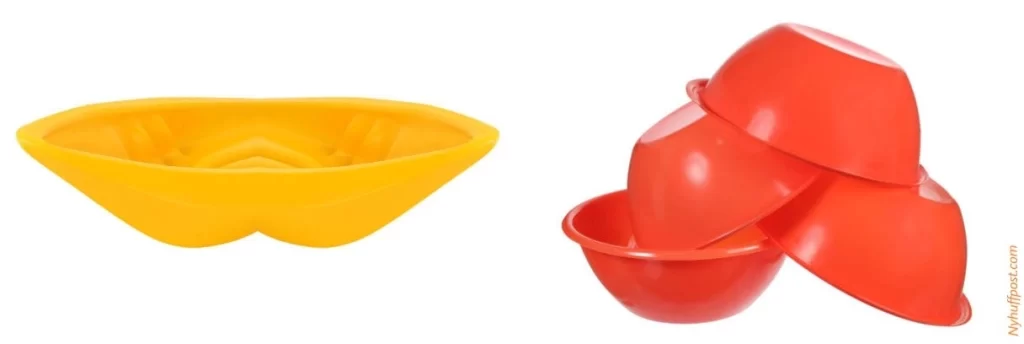Tupperware is a brand name that is associated with the finest meals storage products in the market for nearly eight decades. However the once great company has recently hit the rocks as it files for bankruptcy after a good pecformance. This action has not only surprised its regular consumers but also elicited an array of debate from entrepreneurs, stock traders, and customers. In this post, the author will describe more about Tupperware’s background, causes of Tupperware’s bankruptcy and things that many other companies can learn from.
Tupperware Products Through The Ages
Types of Tupperware Files
The range of products that Tupperware comes in has always been sold as one of its strong suits. They are available in all sizes right from the stackable containers to the modular sets, the files are designed for various uses, based on the need of a user to store his things. Some of the conventional models are round bowls, rectangular boxes or containers, and specific organizer for spices and refrigerator items. In the later years, new types have been developed and brought to the market ranging from microwave containers to reusable environmental friendly containers.
Organizing Kitchen Storage
First of all, it must be noted that simplicity of kitchen storage has been the primary selling point of Tupperware for many years. Again, Tupperware files come in different sizes and designs that assist in most efficiency of cabinets and refrigerators storage. Tight fit and stackable arrangements guarantee the freshest food while at the same time they do not take up a lot of space. These features become more advantageous based on the size of the kitchen especially when it is compact and space is scarce in terms of storage.
Food storage is the most common use of cans but they offer several other uses in our day to day lives.

Although, Tupperware products are not restricted only to the preservation of the leftovers only. The baskets can be utilized in various forms meaning and function which include; storing office items, arts and crafts, or even for planting of little herbs just in case one has a green thumb. For that reason they are a perennial favorite among homeowners as the utility of these appliances is not limited to the kitchen alone.
Eco Friendly Products as a Substitutes for Conventional Tupperware
Sustainable Materials
This has sparked a shift to focus on the so called environmentally friendly materials. There are eco-friendly brands that have come up with food storage alternative such as Bee’s Wrap and Stasher. Most of these products are manufactured with environmentally friendly materials, and therefore are biodegradable. The green consumer highlights the reason why the consumers should consider the alternatives other than the traditional plastic Tupperware.
Reducing Plastic Waste
Recyclable solutions aim to replace plastics to minimize on plastic wastes that are produced. The usage of these merchandise is more immediate than single-use plastics because most of these merchandise are reusable. This change in trend towards sustainability is not only good for the environment but also marks a shift change in the consumer buying behavior that results in a paradigm shift towards the purchase of eco-friendly products.
Cost-Efficiency
One may argue that there are expensive products in the market that are eco-friendly but getting them is costly in the long run. These are products that normally outlive the normal plastic containers; hence they are durable and reliable. This makes them a worthwhile investment to the consumers since they want to be conscious of the impact they make on ecology.
Why the Tupperware Files? Reducing Food Waste
Airtight Seals
With the help of Tupperware files, losses of food are minimized which is one of the major advantages of their usage. Tight fits are beneficial in maintaining food hygiene for several days hence the need to make sure that they are well sealed. This helps in a way that the foods that are left need not be thrown since they will still be fit for consumption.
Portion Control
Some of the ways that consumers can benefit Tupperware containers include; The Tupperware containers can also be used to portion the foods being prepared in the kitchen depending on the amounts that a consumer wants to take. This helps to diminish over-preparation and unnecessary use of resources. From families’ perspectives, this might be a functional method how feeds and excessive matters could be contained.
Transparent Designs
Some of the Tupperware utensils have thin plastic layer and are transparent hence one can see the content inside. This helps to minimize the chances of neglecting stored food that most of the time results in wastage. It easily alerts who should consume the food before getting spoiled or rotting thus increasing efficiency.
The Bankruptcy Decision
Market Changes
It was not a one-day affair for an entity to decide to file a bankruptcy case. Tupperware sale and popularity has been declining mainly due to new competition and change in customers’ tastes and preferences. Further, the trend of using disposable containers, especially for single servings and the increasing trend for green products have slowly eaten into Tupperware’s market slice.
Financial Struggles
The company failed to sustain change and innovation after the introduction of the new styles of the products and the increase in variability of the consumers’ preferences. Low revenues, accrual of overheads and skyrocketing expenses led to the final vice of a company which was the declarative of bankruptcy. This move raises the issue of the problems that established brands encounter in the present-day environment that is defined by the reign of the consumer.
Employee and Stakeholder Impact
The bankruptcy brings a lot of effects to the company and its workers as well as other people that are involved in Tupperware. Layoffs are inevitable and companies and their workers will be left with the insecurity of the unknown. From the stakeholder perspective, their investments have been reduced, thus the future of the brand is uncertain. This is one of the realities that point to the fact that the business world is flooded with risks and instabilities.
Issues That Pave the Way For Financial Difficulties
Increased Competition
The primary pressures that Tupperware encountered was the competition it received from well-established brands and competitors who introduced new material in the market. He said that there were other players who offered a more convenient or environment friendly solution to the consumers that gradually eroded the market share of Tupperware. They observed that through this, Tupperware has been facing stiff competitions from the newly established firms, which has made it difficult for it to continue with its monopoly.
Changing Consumer Preferences
Today’s consumer preferences are different from the preferences that have been observed in the recent past. The customers’ demand for convenience, environmentally friendly, and cheap products and services define the modern market trends. The traditional selling techniques such as the in-home parties did not appeal to the modern consumer who was used to purchasing from online store and enjoying the convenience of purchase-delivery.
Operational Inefficiencies
Mismanagement of operations aggravated Tupperware’s problem in financial performance. The costs of producing the product accumulated an added cost; wrong distribution channels; and management of supplies also contributed to the financial loss. These inefficiencies had to be corrected in order for the brand to survive and this was not an easy undertaking.
Strategic Recovery Plans
Digital Transformation
In order to come out of the woods, what Tupperware requires is a radical digital transformation strategy. This comprises using e-commerce platforms, adopting the data-driven marketing approach, and improving the internet selling experience of the customers. The brand-new webpage may also assist Tupperware expand its reach and appeal to the audiences who prefer to shop online.
Product Innovation
Hence, innovation will continue to play the central role of the revival process in Tupperware’s business. The design of new products, especially the products that can meet ecological requirements, may help the brand regain new popularity among consumers nowadays. The alliances with sustainability-oriented entities and commitments to investing into innovation lay the basis for new products.
Streamlined Operations
Implementing efficiencies in organisation’s functional processes is vital depending on the quantity of money to be saved. One of the ways that Tupperware can improve the way that it operates is through improving the SC, restructuring the supplier contracts and use of automation. These measures will help the brand to function in a more stable and efficient manner and in a competitive environment.
Broader Trends in Consumer Behavior
Sustainability Focus
Tupperware share same fate as many other branded consumer products that are losing their appeal in the wake of shift towards sustainability. Customers retain concern for the environmental issues more and more and prefer products that are friendly to the environment, and there is a shift in attitudes in avoiding plastics that have short life cycles such as plastics bags. This change implies that this is the right time for the brands to embrace sustainable practices to address this change.
Digital Engagement
Linked to technology which is increasingly used by the consumers have today brought significant change in the undertaking of business. Hence brands that have developed strength in interacting with customers and providing them with a warm experience are apt to thrive. Thus, the weak response to this shift could be seen in Tupperware and which indicate the importance of a predominant online presence.
Value-Oriented Purchases
The consumers of today are more mindful of the values that they associate with their purchases and are willing to pay for products that are of value and quality to them, and are also affordable and sustainable in the long-run. Hence, the picture that emerges is that brands that can still ensure consumers that they would fulfill these facets are likely to gain consumer loyalty. Several challenges were apparent with the traditional business model of premium pricing at Tupperware in regard to meeting these expectations.
Lessons Learned
Adaptability is Key
Reading this case it is important to identify that being adaptable is crucial. Being able to respond to the changes promptly in the fast evolving market place is an important characteristic for brands. One should be as flexible as possible and apply innovation in the long-term period.
Consumer-Centric Approach
Industry specifically consumer based focus must be a continuous process in order to have a long-term growth. Realization of the existing customers needs, wants, and concerns can create brand affection and market significance. The case of Tupperware making efforts to engage with the contemporary customers is an example of the importance of heeding the customers’ needs.
Continuous Innovation
It is important to continuously develop new products and services so as to serve the customers better than competitors. They can always created that niche on the market and acquire market share that way by investing on research, development, and product innovation. To regain this lost ground Tupperware needs to recapture this time honoured tradition of innovation in the company.
In summary
Tupperware’s bankruptcy means that this brand that has been in homes for many years is no longer relevant thus ending an era of a popular brand. Despite the fact that the challenges it faced are manifold, the knowledge of the experience is valuable to other companies. Flexibility, focus on the client, and constant improvement are the major factors that define the effectiveness of the model in today’s competitive environment.
In this case, Tupperware’s story is therefore worthy for business owners, financial analysts and consumers to learn and be mindful of constant changes in business marketplace. It is time to separate with a good brand yet this is also the time to look forward to the future and new possibilities of growth in new markets.








